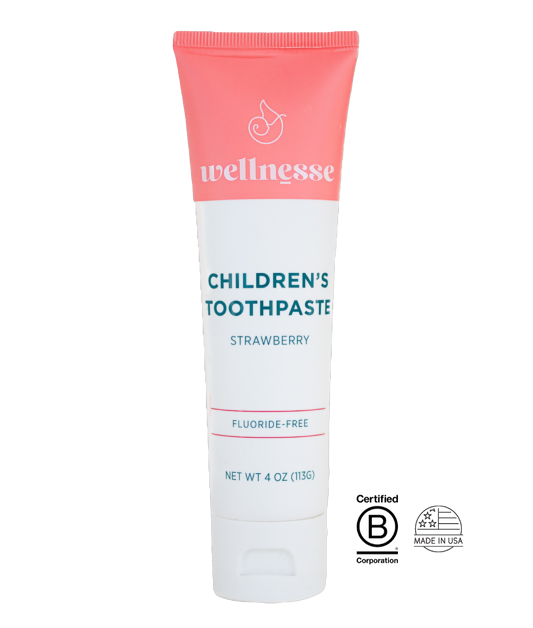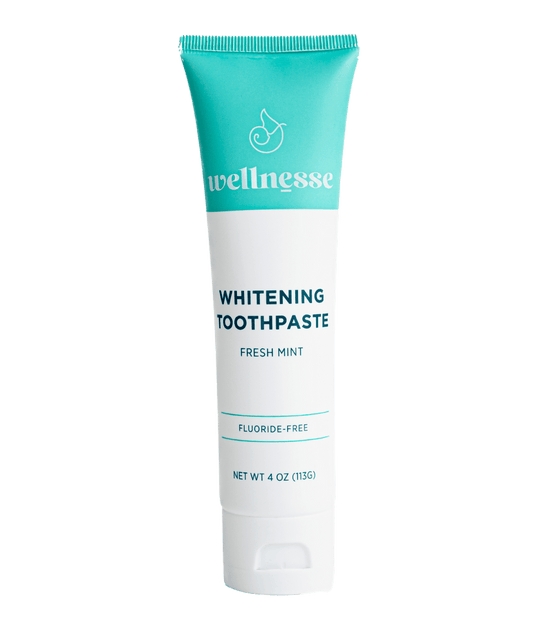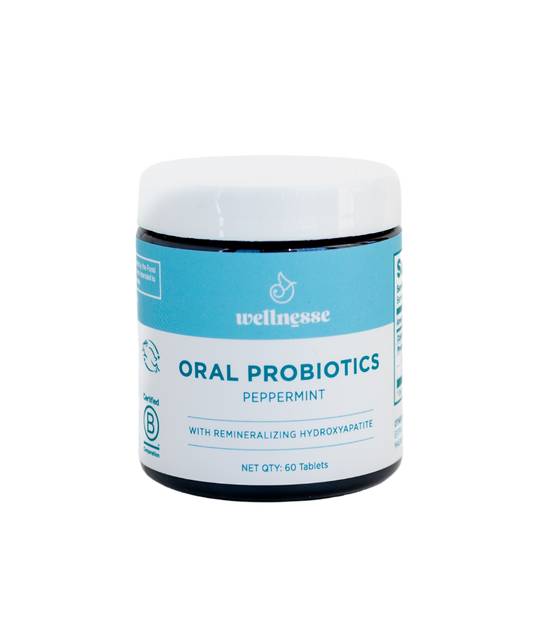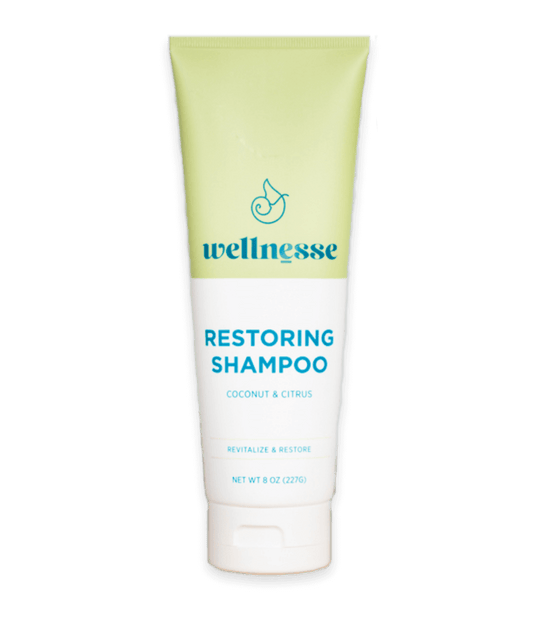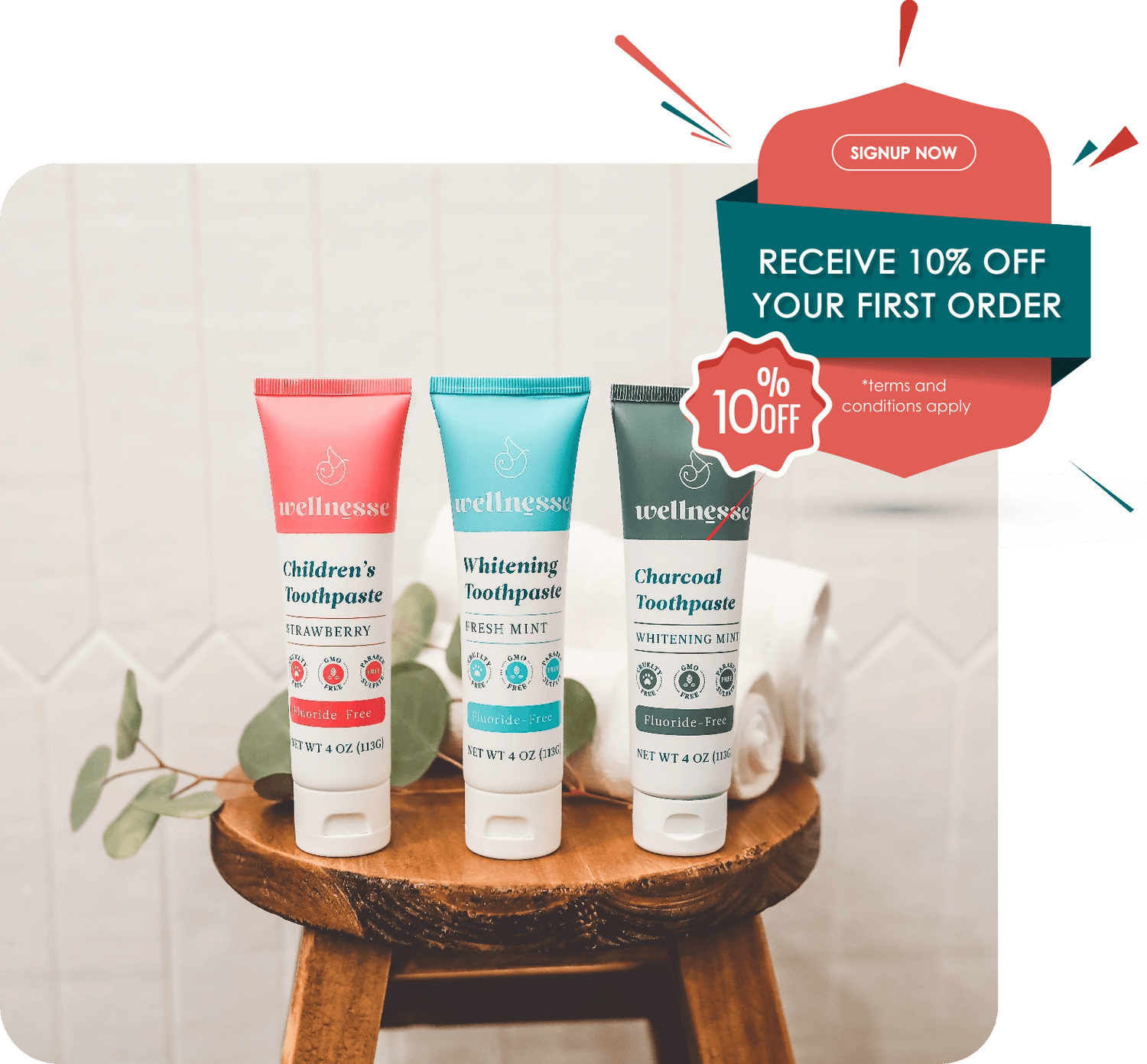
How EWG Ratings Affect your Health
The sad truth of today's world is that we can't trust the products we use daily - even the ones we consume - to be safe simply because they are available. Tens of thousands of chemicals going into food, water, and health products remain untested for safety. Hundreds of chemicals have been detected in those of us walking around and even in unborn babies. Now more than ever, it's critical to eliminate toxins in our lives wherever possible.
Thankfully, several resources are available that make the job easier! Health-conscious people have banded together and are taking a stance. And with harmful chemicals infiltrating nearly every aspect of our lives, it's no wonder the EWG has stepped into action.
You can view the EWG rating for each Wellnesse ingredient on our ingredients page!
What is the EWG?
This is less of a 'what' and more of a 'who' question.
EWG is the acronym for the Environmental Working Group. This passionate group began with Ken Cook, who assembled a team of chemists, epidemiologists, and toxicologists to rate and research the safety of the chemicals surrounding us daily. The goal of this team is to help others, through EWG ratings, to build healthier lives. As they put it, their "mission is to empower people to live healthier lives in a healthier environment."
The EWG is a non-profit organization, careful to clarify that its advocacy methodology stands to better the world for all.
They've gathered metrics on everything from responsible farming and manufacturing techniques to rating over 80,000 products based on their safety for human usage, helping build conservation programs to course-correct the damage done to the planet's health and our own.
Although plenty of people out in the world care about the planet's health, few groups have gone as far as the EWG in their multi-decade mission to expose health issues to the public. They help educate, perform groundbreaking research, and push Washington, D.C. authorities to adjust health regulations.
Why?
The Danger in Drinking Water
There may have been a time when the tap was a source of safe, clean drinking water, but the days of unaltered water are far behind us. These days, tap water and even bottled water contain countless additives, chemicals, and toxins. Ironically, it can take more water to create a plastic bottle than it can contain. In addition, microplastics often seep from the bottle into the water when heated or left sitting for a time (the longer, the worse). And tap water isn't much better.
Both contain harmful bacteria and chemicals.
Knowing where and how to get clean water is hard, so we strongly recommend purchasing a filter! There are several different options you can choose from based on budget, space, and frequency of use. We also recommend checking in with the Environmental Working Group to keep an eye on the quality of your local water sources.
The EWG rates water sources on their transparency with processing and sourcing. They let you know which water sources are pure and safe versus harmful and toxic (containing things like PFAS and carcinogens). Without their help, many of us would continue unknowingly drinking toxic substances every day.
Harmful Farming Secrets
Every day, more and more foods are genetically modified and sprayed with toxic chemicals (pesticides). The EWG supports laws forcing companies to disclose the status of their GMO foods (where they would otherwise keep it a secret). They've also continued to expose a loophole in the law that could exempt thousands of foods from being disclosed as GMO products. The EWG has a hand in all this background work that helps us make healthier food-purchasing decisions.
The industrial agriculture controversy isn't new, but from the early days of their organization, the EWG has taken action. They have exposed many harmful farming practices that put both the consumers and the workers (who are the most exposed) at significant risk.
The EWG doesn't just rate foods; they also offer multiple resources highlighting which foods they consider "dirty" and "clean" (known as the "Clean Fifteen" and "Dirty Dozen" cheat sheets.) These lists rank produce based on their safety for consumption or their likelihood of containing dangerous amounts of pesticide residue.
Harmful Chemicals in Household Products
We know many household products are toxic and can cause serious damage. And it's important to remember it's not just the bleach and cleaners under the sink, but the products we put in our hair (shampoo and conditioner), on our skin (moisturizers and sunscreen), and in our mouths (toothpaste).
Conventional hair care often contains harsh chemicals - like parabens and sulfates - that irritate the scalp, weaken the hair shaft, and even contribute to hair thinning and hair loss. Many skincare products contain everything from carcinogens to endocrine disruptors that don't just risk your long-term health but dry out and irritate the skin, both aggravating existing skin conditions as well as creating new ones. Oral care products are no better, unfortunately, often containing harsh 'cleaning' agents that disrupt the delicate oral microbiome and cause inflammation throughout the entire body.
Knowing all these health risks, the EWG has taken a serious interest in these household products and more. Their Skin Deep database allows you to search any ingredient, brand, or product to view its risk score from worst (10, High Hazard) to best (EWG Verified).
The EWG has even taken a look into the health of diapers. They saw that with each newborn using thousands of diapers just in their first year, it needed to be investigated whether or not the materials were safe for their health. As a result, there are EWG Verified diapers!
Beyond that, they've looked at all kinds of home issues, even linking some U.S. policies to continually allowing for more exposure to flame retardant chemicals, not less.
The EWG even highlights a few alarming statistics for beauty products. They note a significant number of ingredients that other countries have banned for use in cosmetic products are freely used in the United States, including 29 ingredients banned in Canada and 15 banned in Europe. Additionally, dozens of ingredients banned for use in hair dyes are used throughout the U.S. and North America.
The EWG Rating (What it Means)
Americans experience a very high level of exposure to harmful chemicals. One of the best and easiest ways to cut back on the toxins in our lives is to look for certifications. Markers like EWG Verification give an immediate indicator as to whether or not a product is safe.
When the EWG rates product safety and ingredients, they compare it to their database of studies on related health issues. To become EWG Verified, a product must be completely free of chemicals the EWG database lists as concerning. It's a strict standard, ensuring your health is taken seriously.
When you see the EWG mark, it's a strong indicator you can trust the product. Of course, we always encourage you to do your own research! Informed decisions are key.
Our Decision With the EWG
On our ingredients page, you'll see a rating next to each ingredient. That number represents the EWG hazard scale (remember, lower = better). Like the EWG, transparency is one of our core values. We use clean, natural ingredients to support our health, not chemicals and synthetic preservatives that work against us.
At Wellnesse, our founder has spent over a decade formulating recipes using natural ingredients that are safe for you, safe for the planet, and more effective than conventional methods. From the very beginning up to today, our mission has been to make our world a healthier place for our kids to grow up in.
As a part of the Wellnesse community, we can all take part in that.
By eliminating the toxic products in our homes and replacing them with natural alternatives, we can reclaim health for the world one home at a time. And there's no better time than the present!
Being backed by the EWG's stringent evaluations means that we have clear steps toward the bright future we're building every day! We're proud of the clean, ethically-sourced ingredients we choose and even prouder of the powerful, natural products they help us produce for you and your family! Join us in moving toward a healthier planet with healthier families.
Resources
You can also become a subscriber to EWG for more up-to-date info on the movement of world health issues.
The Environmental Working Group. Retrieved 2020, December 31. https://www.ewg.org/
EWG Skin Deep Database. Retrieved 2023, June 9.
https://www.ewg.org/skindeep/
Wellness Mama. Retrieved 2023, June 9.
https://wellnessmama.com/health/toxic-ingredients/



